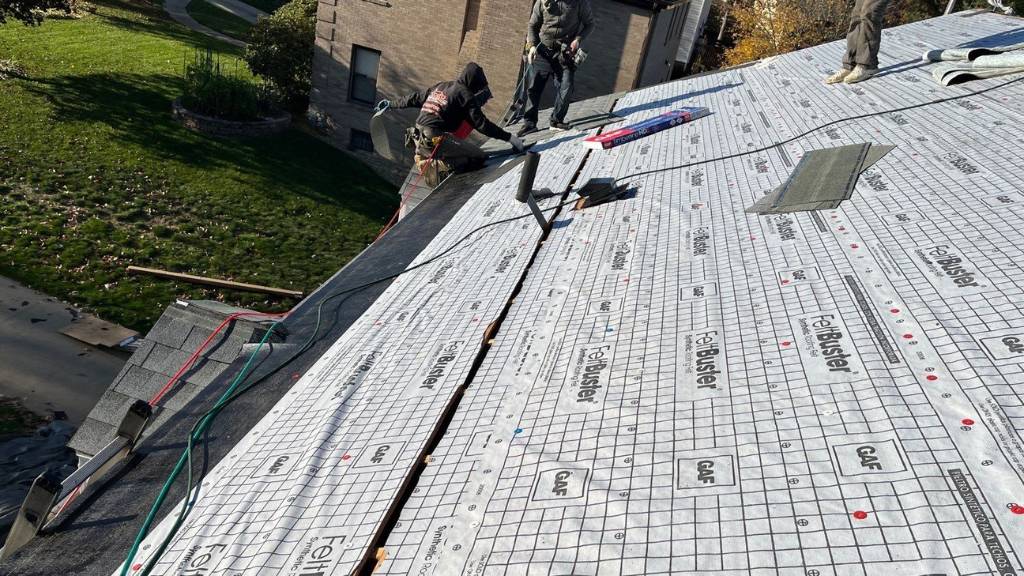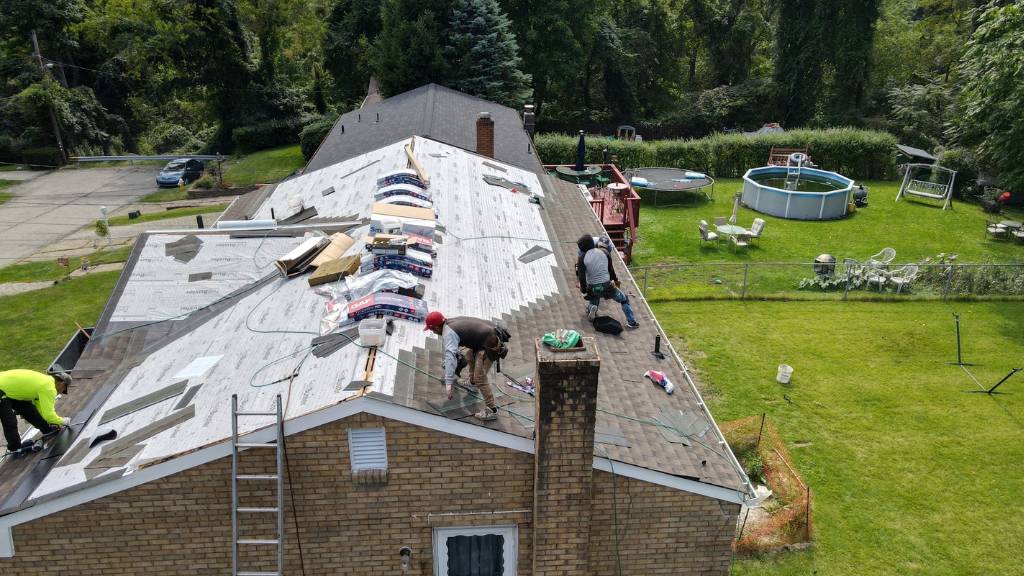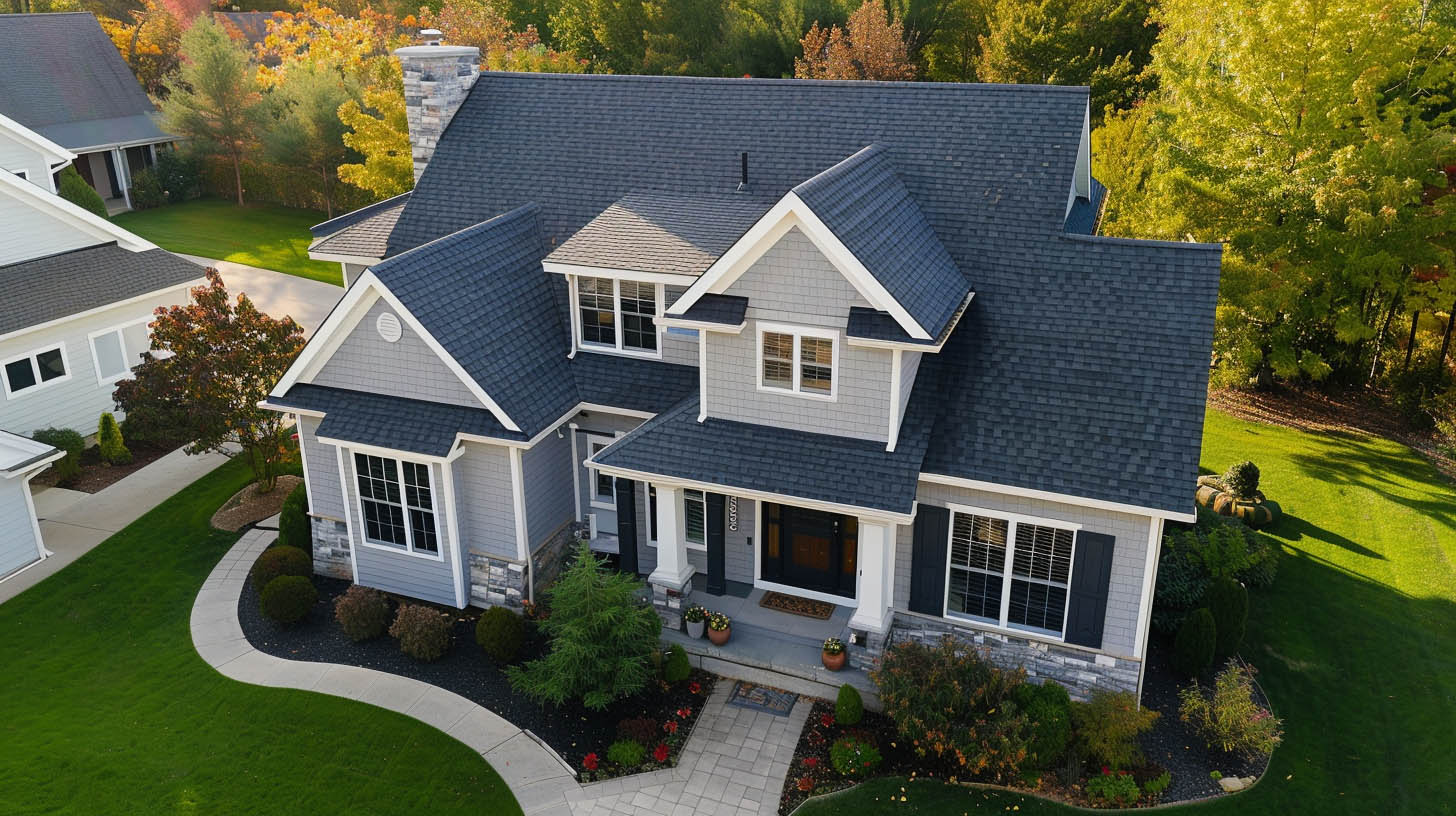
When it comes to your roof, the unsung hero working behind the scenes is the underlayment. It’s like the secret bodyguard of your home, protecting it from the harsh weather outside. Now, let’s dive into the world of roof underlayment and figure out how to choose the perfect one for your climate.
How to Choose the Perfect Roofing Underlayment

Roof underlayment is like the shield under your shingles. It does more than you might think – it guards against leaks, adds extra insulation, and even provides a barrier against ice and snow. There are different types of underlayment, each with its own superpowers.
There are 3 top benefits to roofing underlayment:
- Leak Guardian: Shields against water infiltration, preventing potential damage and costly repairs.
- Insulation Booster: Adds an extra layer of insulation for comfort and energy efficiency.
- Ice and Snow Barrier: Prevents winter-related issues like ice dams, preserving roof integrity.
The Impact of Climate on Roofing
Imagine your roof as a superhero facing different villains – hot sun, freezing snow, relentless rain. The climate you’re in determines the kind of underlayment superhero your roof needs.
Hot and Dry Climates | Synthetic Underlayment
In places where the sun never takes a break, synthetic underlayment is your roof’s best friend. It’s like sunscreen for your house. It resists the scorching sun and UV rays, keeping your roof cool and your home comfortable.
Cold and Snowy Climates | Rubberized or Special Felt Underlayment
For those living in winter wonderlands, rubberized or special felt underlayment is the sidekick your roof needs. These materials are like thermal jackets, protecting your roof from the cold and ensuring snow and ice don’t turn into trouble.
Humid and Tropical Climates | Synthetic Underlayment
In the sticky, humid zones, go for underlayment that laughs in the face of moisture. Synthetic materials are the MVPs here, keeping your roof dry and preventing the nasty growth of mold and mildew.
Coastal and Salt-Exposed Climates
Living by the coast? Your roof needs underlayment with an anti-corrosion shield. Look for special coatings and materials that can handle the salty breeze without turning rusty.
Underlayment Materials
Pros & Cons
Now, let’s zoom in on the materials your underlayment can be made of and the pros and cons of each.
Asphalt Felt Pros
- Cost-Effective: Asphalt felt is generally more budget-friendly compared to other underlayment materials.
- Versatility: Suitable for various climates, making it a reliable choice in different weather conditions.
- Ease of Installation: Straightforward installation process, making it accessible for DIY projects or professional installations.
- Common Availability: Readily available in most hardware stores, ensuring easy procurement.
Asphalt Felt Cons
- Durability Concerns: May have a shorter lifespan compared to some high-tech alternatives, requiring more frequent replacement.
- Weight: Relatively heavier compared to synthetic materials, which may be a consideration for certain roofing structures.
- Moisture Absorption: Has the potential to absorb moisture, leading to issues in extremely humid or wet climates.
- Environmental Impact: The production of asphalt felt involves the use of non-renewable resources, contributing to environmental concerns.
Synthetic Underlayment Pros
- Lightweight: Synthetic underlayment is generally lighter than traditional materials, making it easier to handle and transport during installation.
- Water Resistance: Exhibits excellent water resistance, preventing moisture-related issues such as mold and rot.
- Durability: Known for its durability, often outlasting traditional underlayment materials and requiring fewer replacements.
- Versatility: Suitable for various climates, offering reliable performance in different weather conditions.
Synthetic Underlayment Cons
- Cost: Can be more expensive upfront compared to traditional materials, impacting the initial project budget.
- Environmental Impact: Some synthetic materials may not be as environmentally friendly as natural alternatives, contributing to environmental concerns.
- Puncture Risk: While durable, synthetic underlayment may be more susceptible to punctures during installation or severe weather conditions.
- Disposal Challenges: Recycling options for synthetic underlayment may be limited, posing disposal challenges at the end of its lifespan.
Rubberized Underlayment Pros
- Excellent Weather Resistance: Provides superior protection against extreme weather conditions, including heavy rain and snow.
- Durability: Known for its longevity, rubberized underlayment often outlasts traditional materials, reducing the frequency of replacements.
- Flexible and Easy to Install: The material’s flexibility makes it easier to install around complex roof structures, contributing to a smoother installation process.
- Impact Resistance: Exhibits resilience against impacts, making it suitable for areas prone to severe weather events.
Rubberized Underlayment Cons
- Higher Cost: Generally more expensive compared to traditional underlayment materials, impacting the initial project budget.
- Environmental Concerns: Production and disposal of rubberized materials may pose environmental challenges, as they often involve non-renewable resources.
- Weight: Rubberized underlayment is heavier compared to some alternatives, which may be a consideration for certain roofing structures.
- Puncture Risk: While durable, it may be more susceptible to punctures during installation or severe weather conditions.
Installation Tips
for Different Underlayment Types
Now that you’ve chosen your underlayment sidekick, installation is key. The installation process is where you’ll want to get a professional roofer involved. We never recommend doing the following yourself.
As expert roofers, check out our installation techniques below:
Asphalt Felt Installation
This one is pretty straightforward. Roll it out, nail it down, and you’re good to go. Just make sure it’s snug and secure.
Synthetic Underlayment Installation
Picture this like laying down a giant, protective blanket. Staple it into place, ensuring there are no gaps. It’s like giving your roof a cozy hug.
Rubberized Underlayment Installation
For the heavy-duty rubberized underlayment, think of it as laying down a fortress. Properly seal the seams, and you’ve built a solid defense against the elements.
Maintenance Considerations
Your roof’s new sidekick needs some love too. Regular check-ups can keep it in top-notch shape.
Inspecting Asphalt Felt
Give it a once-over every year. Look for tears or wrinkles, fix them up, and your asphalt felt will keep on being the reliable underlayment it’s meant to be.
Checking Synthetic and Rubberized Underlayment
These high-tech materials usually need less attention, but a quick check for any damage or loose edges is always a good idea. Fix any issues pronto to ensure your roof stays superhero strong.
Take a more in depth look at what you need to know about roof underlayment.
Upgrade Your Roof & Elevate Your Living

Choosing the right roof underlayment is like picking the perfect superhero squad for your home. Think about your climate, understand the materials, and give your roof the sidekick it deserves.
Transform our home’s defense with our help. We offer cutting-edge underlayment solutions:
- Weather-Resistant Mastery: Our underlayment acts as a shield against rain, snow, and extreme temperatures, ensuring a resilient roof.
- Energy-Efficient Serenity: Experience a cozier atmosphere and reduced energy bills with enhanced insulation for year-round comfort.
- Long-Term Reliability: Invest wisely with underlayment that guarantees durability, sparing you from frequent repairs and replacements.
Remember, consulting with a roofing specialist is like having a seasoned superhero trainer by your side – they know the tricks of the trade.
Here’s to a well-protected, weather-resistant home!


